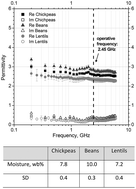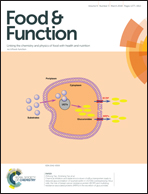On the relevance of thermophysical characterization in the microwave treatment of legumes
Abstract
This study is focused on the characterization of the thermal behavior and physical properties of the most consumed legumes in the daily diet such as beans, lentils and chickpeas. Because of a lack of information in the literature about the effect of microwave treatments on legumes, characterization protocols have been applied before and after subjecting them to microwave irradiation suitable for pest disinfestation. The effects of two different radiative treatments, one suitable for inactivating the infesting fauna and the other simulating uncontrolled treatments, characterized by very high temperatures, were tested. The impacts of microwave treatments on legumes, in terms of thermal behavior, germination capability, tannin and total polyphenol composition and other physical properties (water uptake capability, texture change, mineral losses), after typical soaking cooking processes, are also studied. The thermal properties of the examined legumes were found to be comparable for all samples. Similarly, no significant differences in antinutritional factors, polyphenol and tannin content among all samples were detected. From the structural point of view, samples exposed to high temperatures showed texture degradation and in turn, loss of mineral nutrients during soaking processes. Moreover, their germination capability was drastically reduced. These latter results highlighted why it is important to correctly perform the radiative microwave process in order to both ensure effective and safe disinfestation and avoid nutritional value loss and the worsening of physical properties.



 Please wait while we load your content...
Please wait while we load your content...